BanklessDAO Weekly NFT and Cryptoart Newsletter
Dear Bankless Nation,
The Decentralized Arts family is thrilled to welcome Tam Gryn as author and contributor. Tam Gryn is the Director of Fine Arts at Rally.io, where she helps artists create their own autonomous crypto economies. Welcome Tam!
The ways in which art and NFTs relate to the outside world are one of the most debated topics in this publication: What is the relationship between NFTs and contemporary art? What about the relationship between NFTs and society? Between art and technology? These are all questions we attempt to answer.
If the answers can be found in new projects, surely one of them is the DAOPunks collection, in which the artists want to represent those who work in the DAOs through artistic NFTs:collectibles that lie at the crossroads of collectibles, new forms of society, market, and art.
The speed in which this sector moves is amazing.
Welcome to Decentralized Arts.
Authors: BanklessDAO Writers Guild (Grendel, Kouros, Tam Gryn, nonsensetwice)

This is the official NFT newsletter of the Bankless DAO.
Artist of the Week
🧑🎨 Artist: Jonas Kasper Jensen
🏦 Auction Type: 1/1
💰 Price: 1 wETH
Jonas Kasper Jensen is a visual artist based in Copenhagen, Denmark, working at the intersection of digital art, NFT art, painting, and sound art. In his work, he elaborates on ideas on blockchain technology, fluid gender roles, and the notion of change.
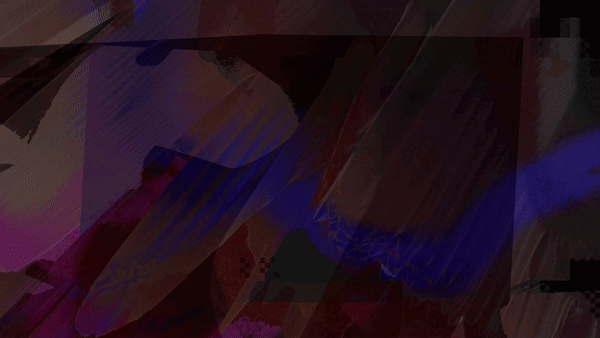
bDAO: How did you become a cryptoartist?
JKJ: I came across Bitcoin in 2015 while researching an exhibition on the economic collapse of 2008. I was interested in the dynamic sublime of finance and fiat. It came to many as a surprise that the global economy could be so unstable, and I, like many other artists at the time, tried to find alternative narratives to the defunct economic system. I immediately understood that Bitcoin had more to it than an alternative to fiat. NFTs did not exist as we see them today. Still, already back then, some artists were experimenting with the technology, and it was clear to me that blockchain-based systems would put how the legacy art world functions upside down in some not too far distant future. And here we are. What a ride.
My first artwork dealing with blockchain technology was a series of paintings that I still work with. They are called STRING and are a series of images that I paint every month. With STRING, I’m mimicking how ledger-based systems store information in blocks. So I make one new painting a month of the same size as if each painting were a block of my work. I exhibited these paintings and a sound-art piece at my last more extensive physical exhibition called Perspicuus “Plasma in DEX garden” at Basis Frankfurt am Main in 2018.
In early 2019, I found that the NFT environment was mature enough to enter it with my work, and I minted my first work under the pseudonym Iona Apples on SuperRare on March 16th, 2019.
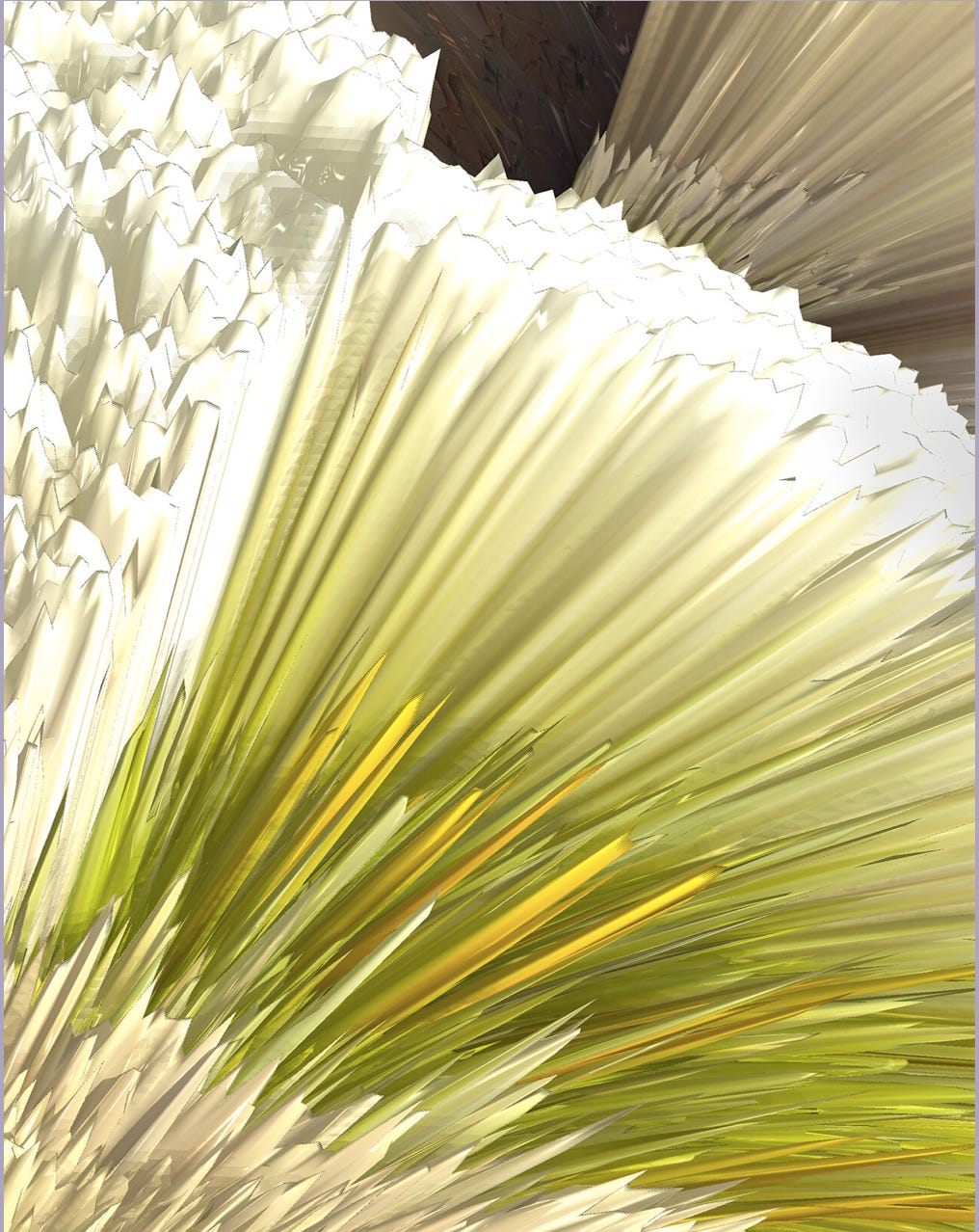
bDAO: What is cryptoart is for you?
JKJ: Cryptoart is at its current moment like a dumpster full of both tons of trash and extraordinary gems. It’s an emerging art form that is sparked to life because of new opportunities for artists to distribute, show, and sell their primarily digital works through NFT technology in an unprecedented manner. Cryptoart is everything from trash art, generative art, AI art, and digital collages, and can, in my perspective, take all shapes and forms. That’s the beauty of it. Every artist has their unique take on how the world of tomorrow should look like. Cryptoart is also lots of copycats hanging around trying to fish for easy cash, but I guess these types have always been around in the art world somehow.
bDAO: What evolution do you see in the world of cryptoart?
JKJ: The evolution of cryptoart is a steep and expansive movement. Back in 2019, the community felt like some 200 like-minded tech and art colleagues hanging out on Twitter and the different NFT platforms. Today there is a new project every day, and NFTs have caught the imagination of the entire planet. In conjunction with my artistic practice, I write for The Tokenizer on NFTs to keep informed and help develop the ecosystem, and back in 2019, I had a hard time finding enough to write about. Today I just can’t keep up with the pace and do not know about most of the innovative work done by both artists and platforms.
bDAO: What do you think about the combination of cryptoart and DAOs?
JKJ: It is a very intriguing concept, and I believe that DAOs, in the long term, have the potential to compete and even replace democracy. They have so much potential if done right. Artists have often been the first communities to embrace new methods of governance and production. Hence, I see it as a natural development that the cryptoart community will experiment and make all the necessary failures needed for this rather philosophical idea to evolve into a valuable tool for human organization and wealth distribution. I see that many of the more established institutions in the NFT space are trying out creating DAOs, and it’s a promising development.
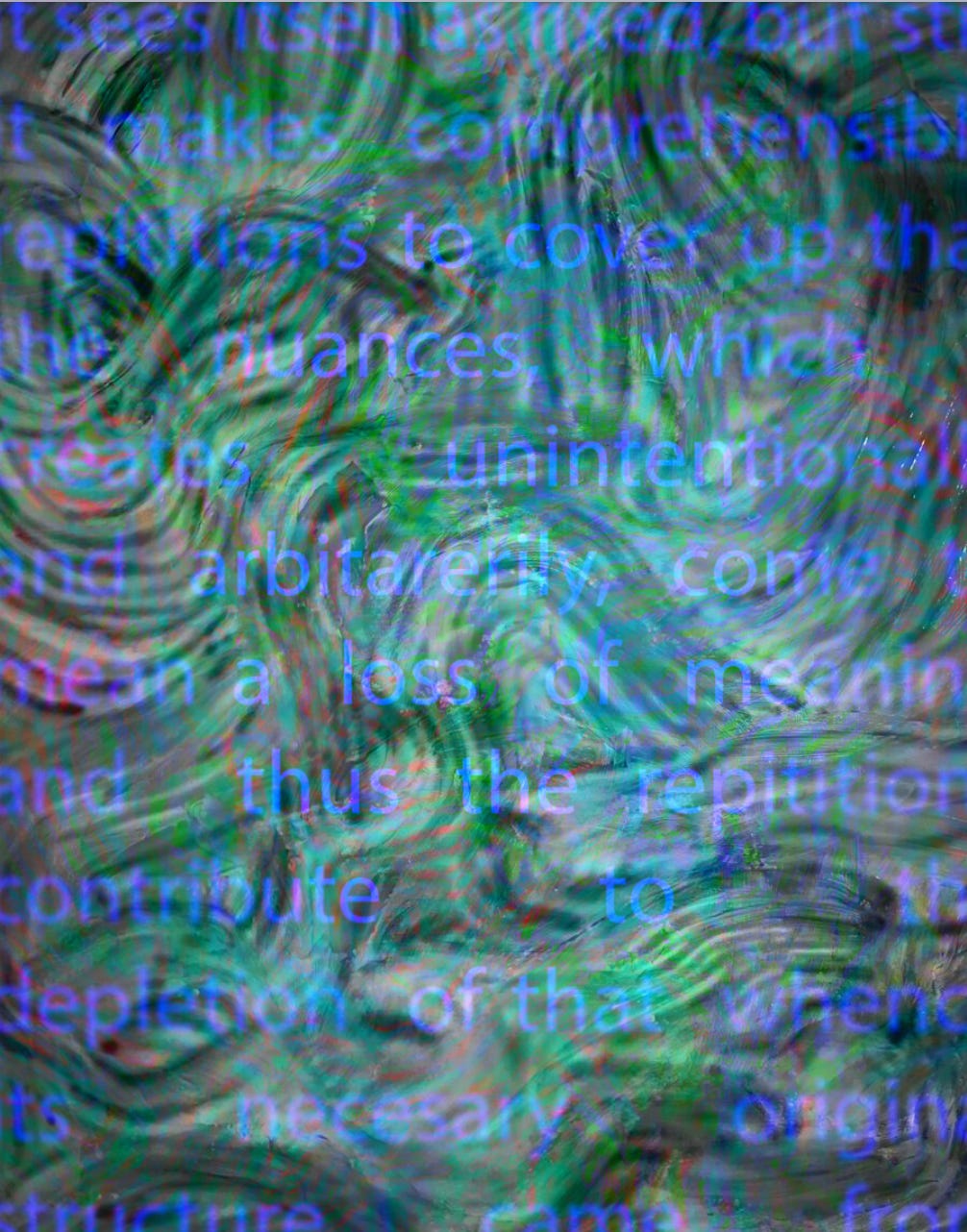
bDAO: Tell us about the works we are dropping.
JKJ: I am dropping the work with BanklessDAO, “Internal as rooted in change // For the love of DEX and DAO.” It is a sound-art video that consists of abstract shapes in motion and a drone-like sound. The forms look like internal organs and visually depict the inner change that blockchain technology brings with it.
The video and sound reflect the disruptive nature of DEXs (decentralized exchanges) and DAOs (decentralized autonomous organizations). The possibility of staying at the status quo is reflected in the loopy nature of the piece.
Curated NFT News
Dolce & Gabbana have auctioned off a nine-piece physical NFT + collection, setting sales of $6 million. This 9-piece collection, designed by Domenico Dolce and Stefano Gabbana, presented entirely hand-made items in Haute Couture for women, Haute Couture for men, and Alta Gioielleria (high jewelry).
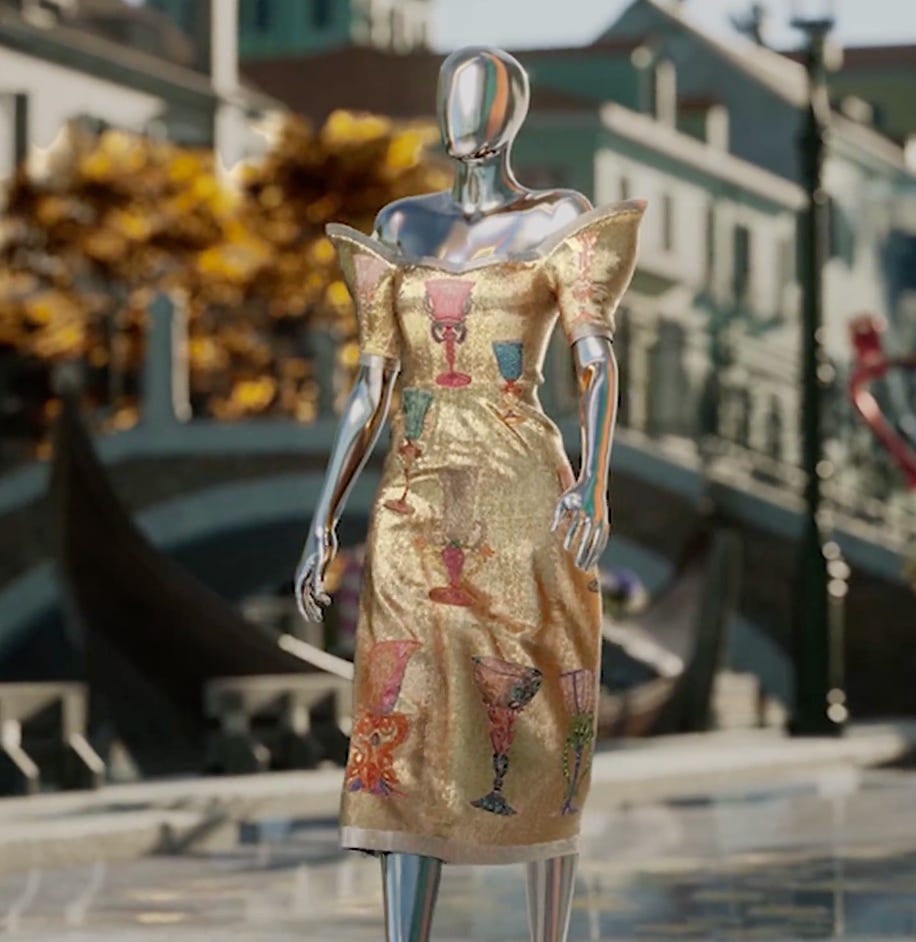
Skygolpe Collab with DotPigeon
Skygolpe is an Italian artist at the forefront of the "digital renaissance" in the NFT space, appreciated by all the greatest collectors of the space. In this collaboration with DotPigeon, Skygolpe offers further proof of his abilities.

Digital Art and Duchamp’s Fountain:
How Reflections of Society Spur the Biggest Controversies
by Tam Gryn
There’s been no ignoring the explosion of digital art and the rise and fall of the NFT market over the course of 2021. The art world’s biggest division right now is between those who believe the technology is speculative, a drain on natural resources, or “not art,” and those who believe that the movement is a cultural and economic revolution for artists. This division is unique but not entirely new; it evokes some of the most notable historical divisions in art history. Some of the most provocative art throughout history has been a result of work that produced misdirected anger by merely reflecting the times.
The Great Divide
NFTs and the emergence of digital art are a rorschach test of how some of the most respected figures in art view tradition and modernity. For some critics, it’s an ecological issue; some of the most popular NFTs are based on “proof of work” blockchain protocols that require intense computing power that requires a great deal of electricity, contributing to CO2 emissions. But an increasing number of options are emerging that burn the same amount of energy as a traditional website. The most popular blockchain for NFTs, Ethereum, is planning a major update that will significantly reduce electricity consumption. In the meantime, other blockchains already use technology that doesn’t require considerable energy usage, such as Rally.io, which is built specifically for artists to have autonomous crypto economies.
A lot of critics have only explored the surface level concerns about blockchains’ impact on the environment. After all, the art world’s impact on the environment has been significant but quieter even before NFTs; just think about the carbon cost of transporting pieces from storage in Luxemburg to Art Basel and back.
In reality, these sustainability concerns are a stand-in for their real concern: the aesthetics of digital art.
NFTs and Digital Art: A New Aesthetic
Much of the digital art we see today reflects the technology behind the movement; it often depicts futuristic, retro, utopian/dystopian, or sci-fi themes with video game aesthetics. A lot of the art is masculine and male-gaze oriented, with female nudes as a reinterpretation of classical art. Some of the most well-known pieces are odes to the blockchain itself.
Thus far, the fine art world could best be described as uncomfortable with the aesthetic.
Meanwhile, the real world is growing more digital every day and the art is merely reflecting this. After 18 months of Zoom calls, remote work seems to be a much more common reality than it was pre-pandemic. The video game industry was larger than Hollywood and North American sports combined last year. Although the digital art movement pre-dates the pandemic, the art itself arguably resonates with more people than it ever has.
The themes and aesthetic expressed in digital art has unexpectedly brought some of the fears, passions, and motivations of these decentralized tech-enthusiastic communities to the forefront of the conversation in fine art circles. This alone has been a fascinating development.
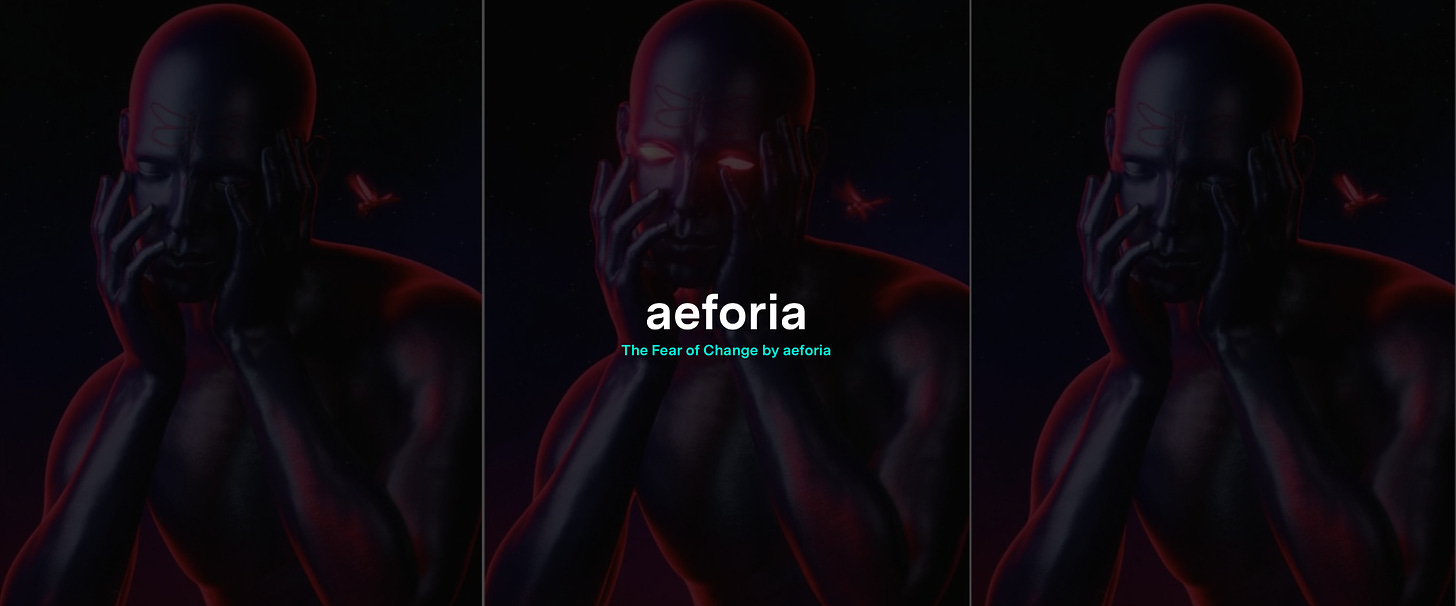
Image “The Fear of Change” by Arforia as an example of Video Game Sci-Fi aesthetics
Duchamp’s “Fountain” Sews Division
In 1917, Marcel Duchamp submitted “Fountain,” an autographed porcelain urinal, to the Society of Independent Artists. The piece was immediately met with fierce controversy. The directors of the Society of Independent Artists, despite their stance for democracy in art, refused to show it. The members of the society argued that it would demean the other artworks on display to allow “Fountain” in the show. The society’s board of directors released a statement to the press: “The Fountain may be a very useful object in its place, but its place is not an art exhibition and it is, by no definition, a work of art.”
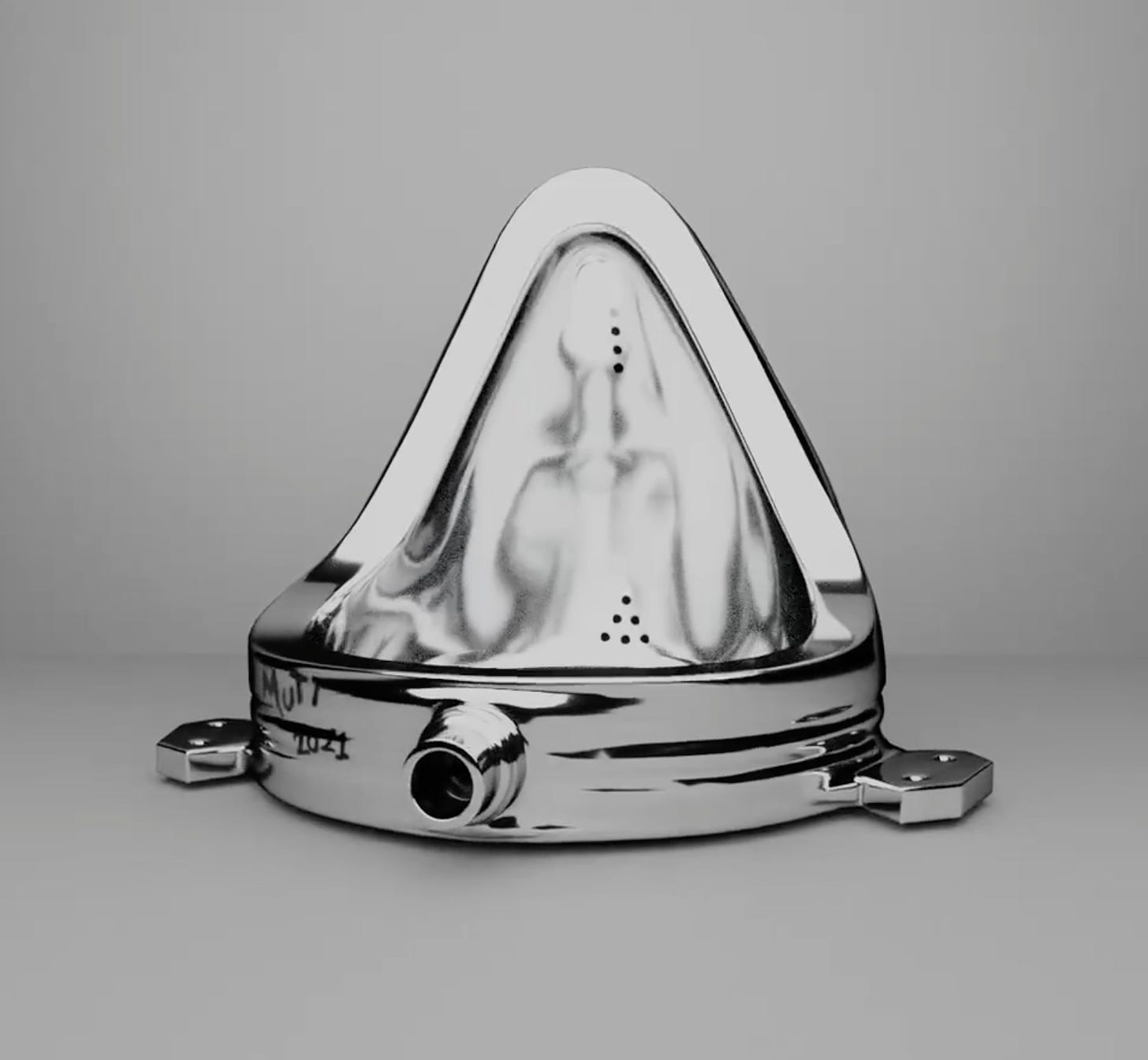
Image “Fountain, Silver 2021” NFT by The Most Famous Artist $ART minted in the eco friendly side chain Rally.io
Why did the piece provoke so much hostility? Perhaps because the intent of the piece was to reflect the cultural era: the dawn of consumer society and materialism. The idea that we were going to adore objects in the future was dead-on and led to later movements that touched on similar concepts. Duchamp paved the way for later movements such as Pop Art; the Andy Warhol Museum held an exhibition examining the artistic links between him and Duchamp, ‘Twisted Pair: Marcel Duchamp/Andy Warhol’. Warhol owned over 30 Duchamps, including a copy of the ‘Fountain’ urinal. Warhol understood that advertisements, consumer objects, newspaper photos, and people themselves were all up for grabs as art. He understood the ready-made, along with the irony of the mass production of his time.
The infamous toilet was a joke but had real truth behind it that gave it generational cultural value. Now, the piece is considered a major landmark in 20th century art.
Impressionism Takes on Holy Aesthetic
When Impressionism arose in the late 19th century, these artists were among the first to paint in the outdoors. At the time, taking a canvas to a field was a crazy idea. Artists had historically mostly painted for the church or monarchy. Art was usually propaganda commissioned by the state for religious purposes.
But that was only part of the controversy; Impressionism’s aesthetic also produced seething responses. The paintings weren’t realistic and looked completely different than the Neoclassicism aesthetic. They were messy. For many, this was definitely “not art.” It didn’t represent traditional society values of the church and monarchy. There was no order.
But for many, it represented their lives. The opening of new infrastructure, cafes, and leisure consumption including the first department store in Paris in 1869 led to a social shift that was manifested in Impressionist art. People wanted modern beauty and consumption. It was the first time that there was no social message; the artist just wanted to paint. These imperfect illusions of nature and leisure for painting's sake are centerpieces of fine art museums today.
Museums: the Cultural Tipping Point
So how do these works go from being reviled to revered? It’s typically museums that tip the scales and get to decide what is history.
When a new movement of art arises, many artists, critics, collectors, dealers and others ascribe to and welcome new philosophies of art as they appear. In order to get to a museum, the art work has to fit within the institution's mission, vision, and collections growth plan. When a museum acquires a work of art, they take on the stewardship of that object in perpetuity which means the artist has a place in history. Curators work on selecting the pieces, searching the market (galleries and artist studios) for works that fit the museum's mission and present them to a museum's board who then make a decision.
For digital art and NFTs, this will take time. Museums aren’t first movers, they are retrospective by design. Analyzing movements’ impact takes time, and digital art won’t be an exception to this. But the process is already underway. Most museums are testing the waters, but not from a curatorial new artist standard.
We may not ever see Beeple in a museum — there’s been controversy over the actual content of his work; a lot of it contains racist and homophobic themes. Whether this is ironic or not, it will likely prevent Beeple from being shown in museums. But the digital art community is as vibrant and active as any recent art movement. It’s only a matter of time before museums catch on and NFTs gain the cultural respect that other controversial reflections of their time have received.
Crypto’s Impact on Art: Just Scratching the Surface
The larger impact of NFTs is much bigger than the digital art aesthetic. Artists now speak directly to collectors and their communities using platforms like Discord. This new relationship was born out of the dawn of social media, but with crypto it's even more direct. With crypto, artists can be at the center of the economy that their art creates.
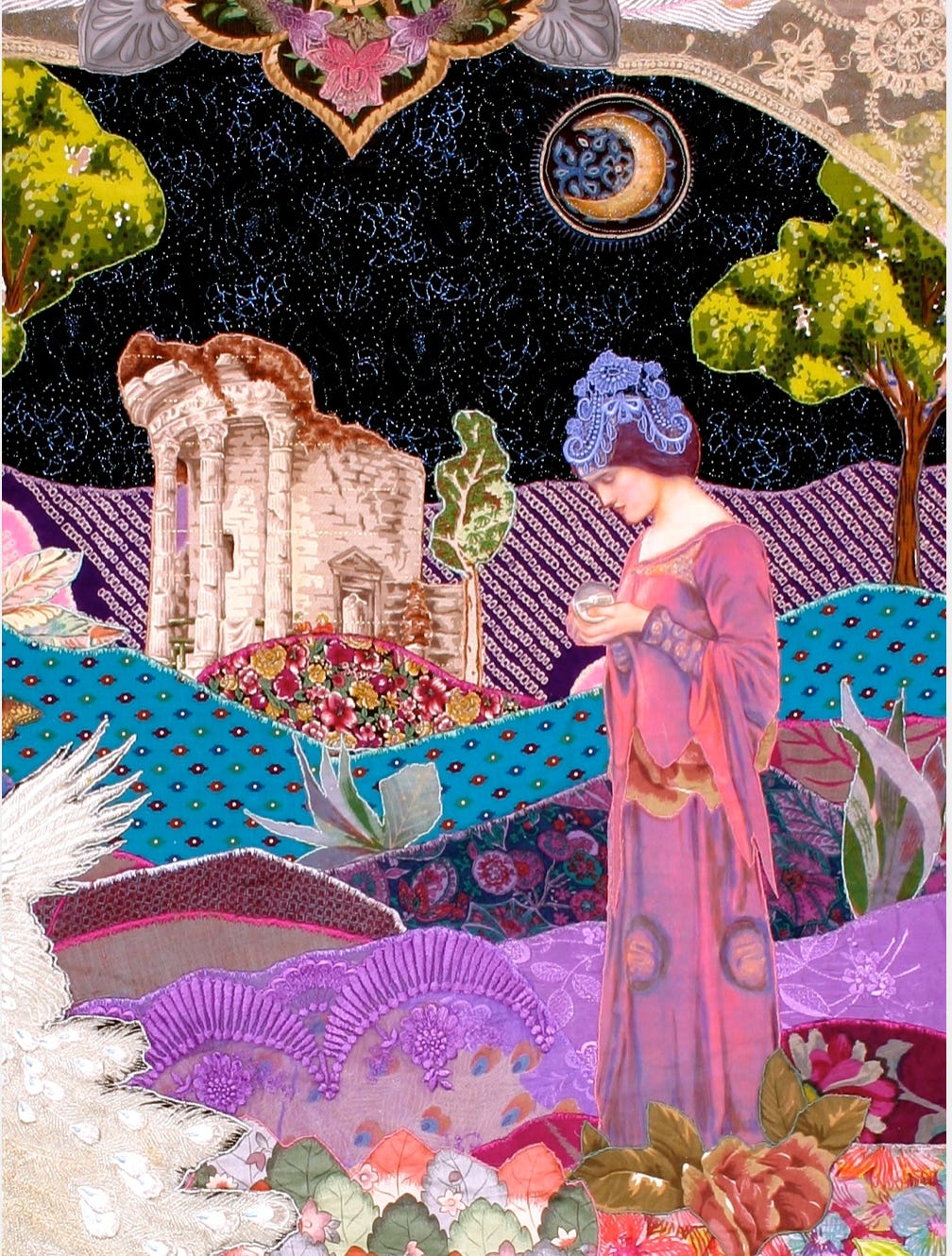
Image “The Muse” NFT by Amy Zerner at the Intersection of Art and Mythology
More artists will see the value as the tech continues to develop more integrations with the real world, and as that technology becomes more sustainable. Remember how much it took to connect to dial-up Internet in the 1990s? Today’s version of the NFT is just the tip of the iceberg. The future version will be more useful, valuable, and palatable for everyone in the art community.
Tam Gryn is the Director of Fine Arts at Rally.io, where she helps artists create their own autonomous crypto economies. She is also Head Curator at SHOWFIELDS. She is the former Head of the Curatorial Department of the Artist Pension Trust as well as Head Curator for RAW POP UP. Tam is the co-founder of Culturadora and currently sits on the Board of Directors of the Kulturspace Foundation in Berlin. She has curated multiple art exhibitions as well as charity fundraisers. Clients and collaborators include The Brooklyn Museum, The Whitney Museum, Museo de Arte Contemporaneo de Puerto Rico, Glossier, Heineken, Bombay Sapphire, The Glenlivet, Diptyque, Evian, Mastercard, and SVA School of Visual Arts NYC. Originally from Venezuela, Tam studied Art History at the Sorbonne University, Politics at Reichman University and Negotiations at Tel Aviv University.
DAOpunks: a collaboration between Crypto Bushi, Sinjun and BanklessDAO
The DAOpunks project is a collaboration between artists Crypto Bushi, Sinjun and BanklessDAO. It has innovative elements in this space, like being able to print unique tees with the DAOpunk JPEGs along with metadata and QR codes for proof of ownership IRL.
The first DAOpunk (pictured below) was created to commemorate the launch of BanklessDAO in the first half of 2021. Since then, Crypto Bushi, the artist behind the original artwork, has been airdropping 1/1 editions of DAOPunks to BanklessDAO members in an effort to spread DAOculture. Bushi was inspired by the DAOpunk movement when he decided to quit his job and go full-time into the DAO space.
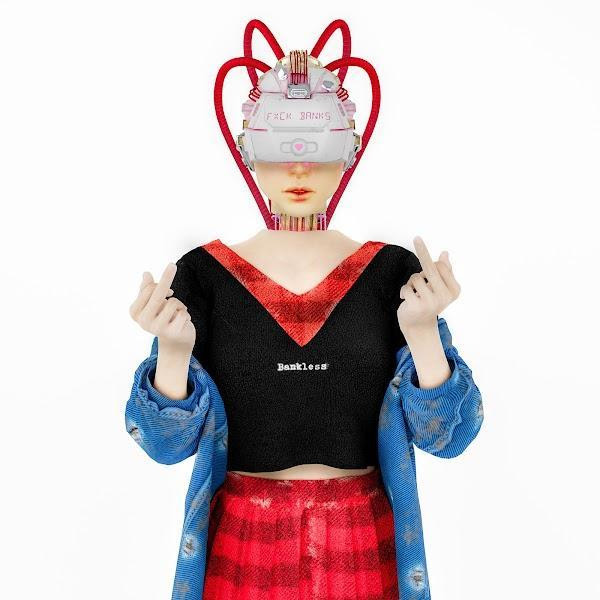
CORPORATEpunk to DAOpunk
The mission of the DAOpunks is to help free all humans from the soul-sucking drudgery of default world work to the rewarding expansive freedom found in meaningful DAO work.
The DAOpunk NFT collection represents the shift from off-chain to on-chain work, as we transition from mundane and transactional work experiences to fulfilling self-actualization. They embody our true selves, depicted in the metaverse. Our personality, traits, quirks, features, all displayed in full form, free from the corporate mask we would otherwise wear.
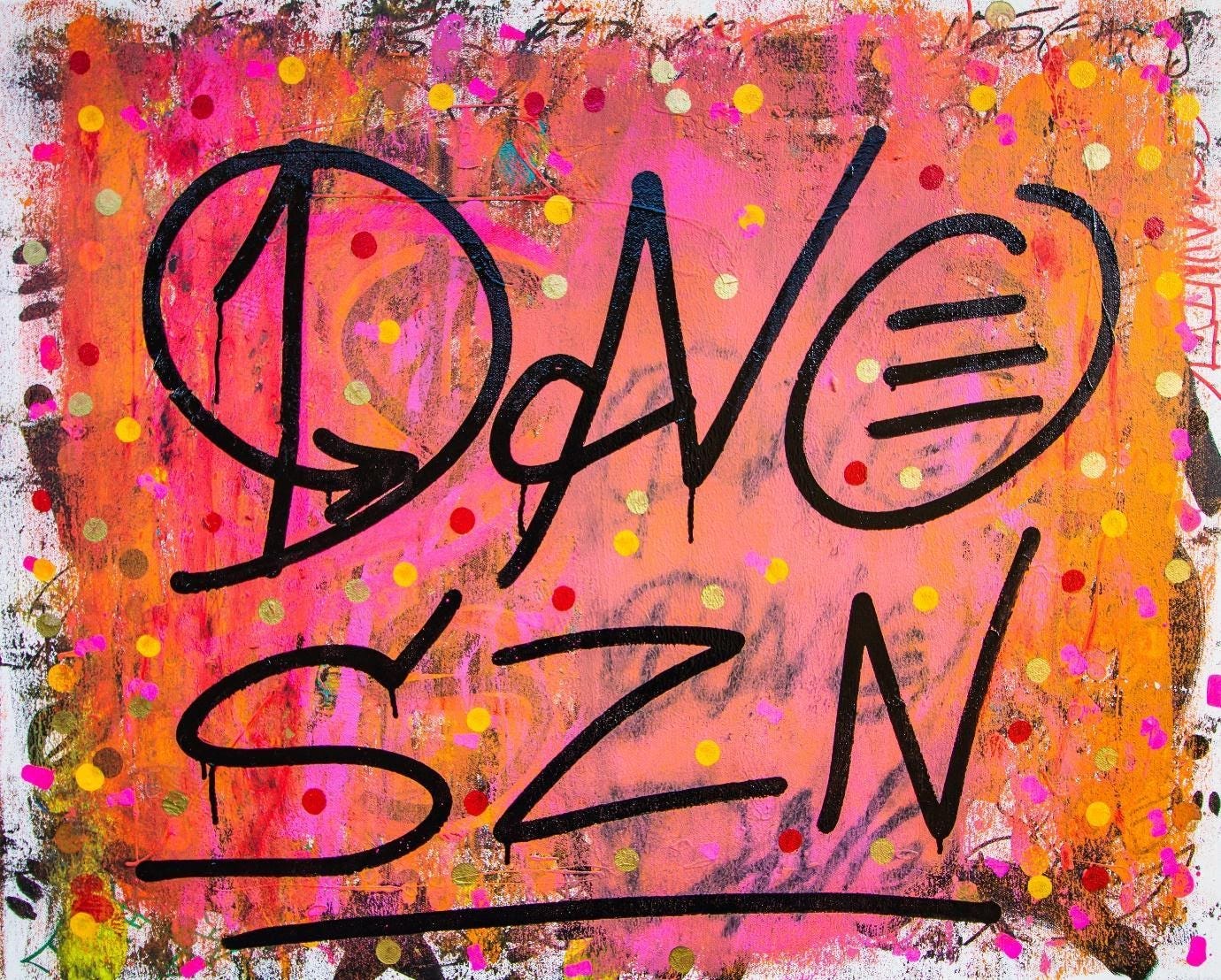
The feedback from the community has been great, motivating Crypto Bushi to expand the DAOpunks project to be available to more people that share the same ideals.
With input from fellow BanklessDAO artist Sinjun, new DAOpunks designs are being created that will be available to mint in early October. Each of these DAOpunks will be unique and have generative traits. Launch Date TBD.
Each DAOpunk NFT minted from the Phase 1 public sale will be entitled to a limited-edition tee from MetaFactory. The physical tee will feature your DAOpunk JPEG along with its metadata and QR code for proof of ownership IRL. These unique identifiers will actually be in the print design on the shirt itself!

After the success of the DAOpunks NFT-Merch launch, they will launch “How To DAO.” This will be a large-scale collaboration between over 50 DAOs, the likes of which the world has never seen before. An artist will be chosen from each DAO to create a piece of artwork that plays with the DAOpunk ethos and stays true to their DAO. With the assistance of Metafactory, once the system is created, they plan to open up the innovative printing technology to other DAOs that allows for unique 1/1 NFT information on each garment. Each piece of artwork will be sold as an NFT and redeemable for a merch item that contains the exact NFT and unique identifiers. 50% of future sales will go towards the DAOpunks treasury and funding public goods grants and projects that will help bring more people into thriving full-time DAO work. The ecosystem will grow stronger and healthier because of the contributions.
Down the road, DAOpunks plan limited edition merch drops and metaverse wearables. It is possible that you could get apparel from your favourite DAOpunk and truly be a DAOpunk yourself.
For more information please visit:
DAOpunks Official Twitter https://twitter.com/DAOpunksNFT
DAOpunks official Discord https://discord.gg/t9YfHJWAP9
DAOpunks Official Instagram https://www.instagram.com/daopunks/
Crypto Bushi’s Twitter https://twitter.com/thecryptobushi
Sinjun’s Twitter https://twitter.com/SinjunART
Anamorphosis-4: Hit Et Nunc by G.Contro

Our Fine Arts were established, and their type and use were fixed, in an era quite distinct from ours and from men whose power of action on things was insignificant compared to what we have…
This is the incipit, already illuminating in itself, of an epigraph that Walter Benjamin steals from the pen of Paul Valéry. The following essay is, if you think about it, the first and perhaps the only one we should have thought of: The work of art in the era of its technical reproducibility. Everything that can be said about our favorite theme is there, preserved in pages published in 1936, on the brink of the European catastrophe.
As true robbers as we are, we will not dwell on the complex fruitfulness of the sage. It will be enough for us to borrow Benjamin's concept of "aura", the Hic et Nunc, the specific of the work of art. Its authenticity. It is clear—right?—that our whole game is played here, around the value that an act of art assumes and preserves and transmits by virtue of its uniqueness. Uniqueness as a value. What value? Will there be an anthropologist who has studied the supreme mystery of the enhancement of objects? The result could be something shocking for the absolutized conventions of our economic doctrines.
According to the legend, reported by Alberto Manguel and Gianni Guadalupi, the subjects of Eldorado use gold only for aesthetic purposes, adorning palaces and temples, but in reality they value it much less than food and drink. In fact, their capital, Manoa, is entirely built with gold itself, as if they considered it a merely functional, albeit humble, material, like concrete. Which is worth more to us than gold.
Bankless DAO NFT Updates
Last week’s weekly showcase numbers: Nittra did 3.46 ETH in sales with the WGMI and Probably Nothing NFTs
Call to Action
BanklessDAO NFT weekly showcase: Check out this week’s NFT Showcase.
Participate in the #NFTClub channel: Share your passion for NFTs, your favorite collections, your favorite crypto artists!

